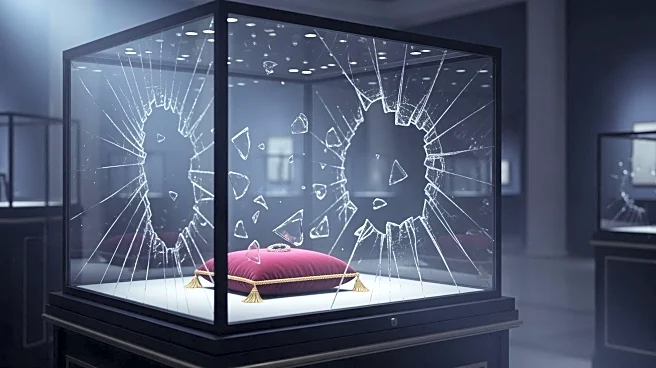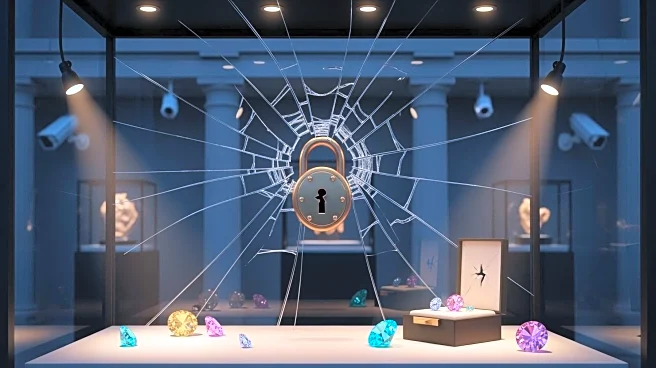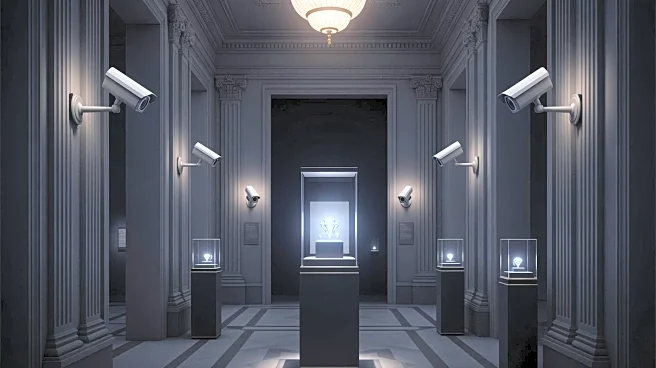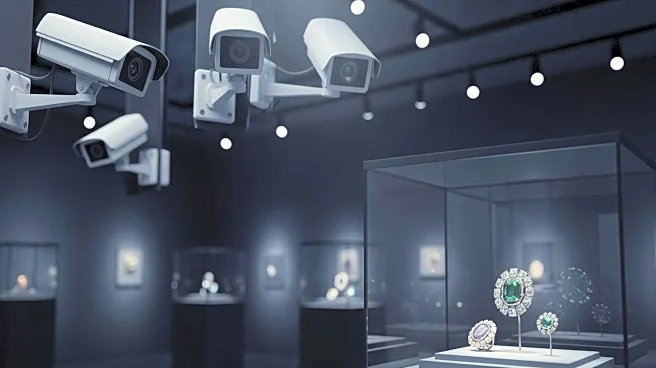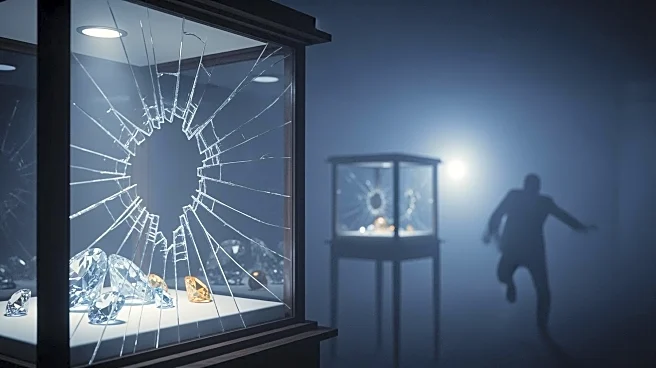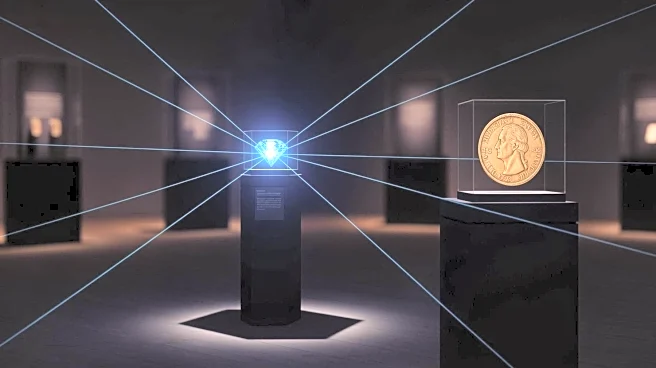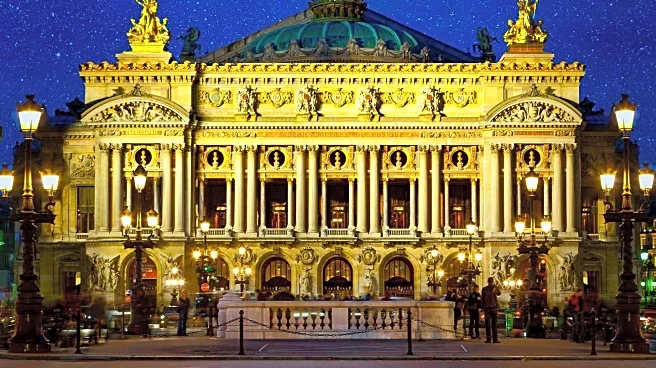What's Happening?
Two suspects have been arrested in connection with the theft of crown jewels from the Louvre Museum in Paris, valued at $102 million. The Paris prosecutor's office confirmed the arrests, noting that one
suspect was apprehended while preparing to board a flight from Charles de Gaulle Airport. The theft occurred last Sunday when four individuals used power tools to break into the museum during daylight hours. They accessed the Galerie d'Apollon via a balcony using a vehicle-mounted mechanical lift. The thieves threatened security guards, evacuated the premises, and cut through display cases to steal the jewels. The museum's security protocols have been criticized for failing to prevent the theft, with reports indicating that one-third of the rooms in the raided area lacked CCTV coverage.
Why It's Important?
The theft of such high-value items from one of the world's most-visited museums highlights significant security vulnerabilities. The incident has prompted scrutiny of the Louvre's security measures, which are crucial for protecting cultural heritage and valuable artifacts. The theft not only represents a substantial financial loss but also impacts France's international image regarding the protection of its cultural assets. The arrests may lead to further insights into the criminal network involved, potentially aiding in the recovery of the stolen jewels and preventing future incidents.
What's Next?
The arrested suspects are subject to questioning by specialist police for up to 96 hours. The investigation will likely focus on identifying the remaining members of the theft operation and recovering the stolen items. French authorities may also review and enhance security protocols at the Louvre to prevent similar incidents. The museum's director has already acknowledged weaknesses in the current security system, suggesting potential upgrades to CCTV coverage and other protective measures.
Beyond the Headlines
The theft raises broader questions about the security of cultural institutions worldwide, especially those housing high-value artifacts. It underscores the need for museums to balance public accessibility with robust security measures. The incident may lead to increased investment in security technologies and protocols across similar institutions globally, aiming to safeguard cultural heritage against sophisticated criminal activities.
